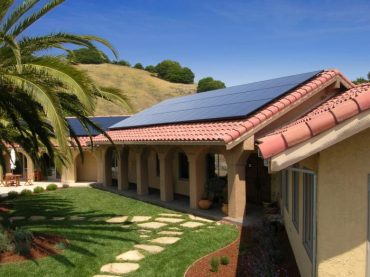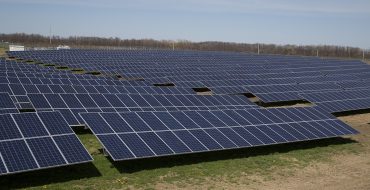
John Bleasby
Shocks to the system: Changing government policies in Canada and the U.S. challenge residential solar
Canadian ContractorNZE focus may shift to building envelopes, not energy generation
Canada’s Net Zero Energy pathway has two basic components: a well-insulated building envelope and energy generation to match energy consumption. However, the go-to energy generation solution of the equation, small scale residential solar PV arrays, may become collateral damage as a result of import tariffs in the U.S. and carbon reduction battles in Canada. The result could spark an industry shift towards a Passive House approach.
In the U.S., tariffs counter projected industry growth
New 30 per cent tariffs on solar panels from overseas, including Canada, will undoubtedly impact future solar installations, both commercial and residential. However, in the case of residential solar systems that have benefitted from direct government incentives or tax breaks of some sort, the financial attraction for individual homeowners becomes even more tenuous.

Solar PV arrays will be mandatory on all new California houses built starting 2020, adding to home affordability issues
Solar industry boosters claim the cost of solar panels will continue to decline over time, offsetting the impact of high tariffs. In addition, the U.S. import tariffs themselves are temporary and scheduled to decline by five per cent per year. Therefore, the industry is confident that despite any short term pain from tariffs, the industry’s growth will continue. However, some reports suggest that even a projected 10 per cent cost increase for installations resulting from tariffs will reduce industry down by about the same amount.
Not content to wait, representations are being made both by industry interests in the U.S. and the Canadian government to have the tariffs dropped immediately. However, these tariffs are bundled with the on-going trade war initiated by the Trump administration. The issue now resides in the political arena.
Canada lags the U.S. in solar installations, with reason
Residential solar installations in the U.S. are well ahead of Canada. That’s no real surprise given the sunshine hours in southern states like California and Arizona. USA Today reports, “By the end of this year, the number of U.S. single-family homes with solar is expected to hit 2 million, double from 2016 and half the 4 million projected by 2023, according to the Solar Energy Industries Association.” However, the USA Today report puts those numbers in perspective, saying, “ Those 2 million homes represent just 2 percent of all U.S. homes.”
Residential solar installs may have peaked
There is obviously a long way to go. In fact, solar PV arrays may in fact have peaked in 2016, with nearly 370,000 installations. Since then, the numbers have dropped, according to the Solar Industry Association/GTM research. There were only 305,000 installations in 2017, with 2018 on track to be less than 300,000.

Ontario Premier Doug Ford has vowed to fight Ottawa over the federal carbon reduction plan. Green projects of all types will lose provincial assistance as a result
At the same time, California has recently legislated that all new homes starting in 2020 must have PV solar array systems (see previous coverage). It makes for an interesting dynamic going forward, not the least of which is housing affordability. Recent statistics released in the U.S.A. indicates that new home construction starts have declined by as much as 10 per cent, with higher costs of materials cited as a factor. Compulsory solar like in California makes homes even more expensive.
Ontario Premier Doug Ford takes on cap-and-trade
In Canada, the latest salvo fired at the federal government’s national carbon reduction initiative comes from newly-elected Ontario Premier Doug Ford. Ford says his province will cancel the cap-and-trade program developed by the previous Liberal government, and announced the immediate curtailment of grants, rebates, incentives and capital projects that were to be funded by the program. Without government funding of some sort, the financial attractiveness of small scale residential solar for homeowners will diminish.
At the recent Premier’s conference in New Brunswick, Ford had hoped to find provincial allies to join him in his fight against the federal carbon program. He came away empty-handed, with only Saskatchewan willing to join a challenge to Ottawa. The legal arguments against the federal plan may not hold much water, but a battle is likely anyway, bringing the issue into full public attention.
Almost all provinces have moved away from residential solar subsidy programs anyway, cap-and-trade programs notwithstanding. Prices for solar panels may decrease, as industry members predict. However, when it comes to small scale installations, labor costs for installation and system connection are not likely to drop.
Many experts believe the efficiency gains offered by community rather than individual solar installations solar projects would be better alternatives should governments venture into the subsidy arena again. “One of the potential disadvantages of community solar is the very high land cost,” wrote Ryan Hledik, a principal at U.S.-based consultancy The Brattle Group and author of a recent study on the topic. “But there are a lot of opportunities, especially in non-urban or less urban areas, where land for community solar would be lower cost.” Hledik suggests that in many non-urban situations, the economies of scale and location advantages of community solar would deliver “13% lower total solar PV project expenditures per watt.”

Solar farms offer better scale efficiency than small, individual residential solar installations
Where does the solar issue leave residential housing?
From the standpoint of contractors dealing with Net Zero Energy going forward, governmental funding gaps for residential solar will move focus towards the building envelope itself. In fact, a subtle shift towards a Passive House approach is noticeable across Canada’s residential housing industry. The essential concept of the Passive House approach is to reduce the building’s energy needs overall and thus reduce dependency on complicated and expensive energy systems. As a result, even those builders wishing to continue using labour-intensive wood frame methods can now source numerous systemized products that offer solutions for the air barriers and insulation required to reduce energy consumption.
The debate concerning small scale residential solar is made even more poignant in both Canada and the U.S.A. since we may arguably be entering a period of relatively abundant and inexpensive natural gas along with a drop in electricity rates as supplies from large scale renewables increase. In other words; the trend may be to continue to build “tight” to reduce energy consumption and leave options open for the energy generation part of the equation.
Got feedback? Make your opinion count by using the comment section below,
or by sending an email to:
JBleasby@canadiancontractor.ca
Follow John on Instagram and on Twitter for notifications about his latest posts

![]()

Leave a Reply